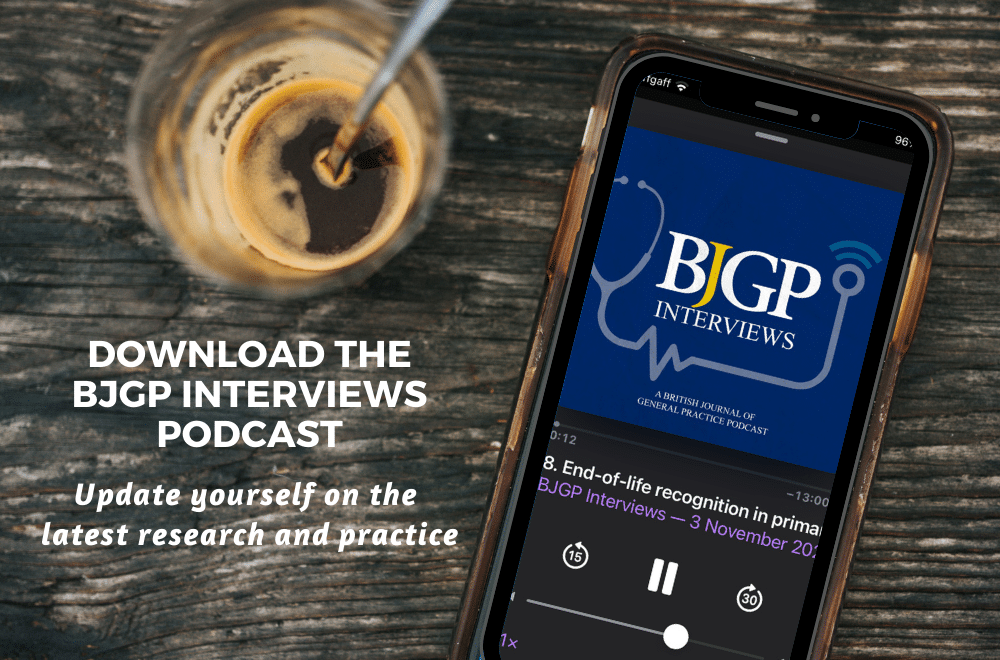 Peter Lucassen has been working as a GP for 35 years in a small village in the Netherlands and has just retired. He is still working as a senior researcher at Radboud University Nijmegen Medical Centre. He is interested in medically unexplained symptoms, depression and generalism.
Peter Lucassen has been working as a GP for 35 years in a small village in the Netherlands and has just retired. He is still working as a senior researcher at Radboud University Nijmegen Medical Centre. He is interested in medically unexplained symptoms, depression and generalism.
In primary care lots of patients present with the complaint of feeling blue, sad or depressed. High and rising prescription rates for antidepressants(1) suggest that GPs work more or less from a biomedical point of view and start questioning the patient about the list of symptoms of depression as described in the disease-focused guidelines. However, antidepressants have shown to have limited effectiveness in primary care(2) and the concept of ‘depression’ lacks evidence for a discrete pathophysiological basis and validity.(3)
GPs commonly report having ‘no other option’ than to prescribe given that their patients are unable to access talking therapies in a timely manner, and/or because they perceive that they have insufficient time to engage with alternative approaches themselves. Medicalisation of distress is a logical result and could be considered a feature of a health service under pressure – a pragmatic response to resource shortage. The question remains whether GPs have other options within current constraints. We think they have.
“A truly patient-centred response would involve efforts to understand a patient’s problem before any consideration of symptom scoring.”
GPs are able to adopt an alternative approach. In such an approach GPs can turn the biopsychosocial consultation model upside down – replace a disease-focused approach with a person-focused approach, in which they prioritise the psychosocial above the biological (flipped consultation). This is in contrast with current usual care in which the focus is mostly primarily biological with psychosocial attention as an addition. Middleton and Moncrief stated: “a truly patient-centred response would involve efforts to understand a patient’s problem before any consideration of symptom scoring, diagnosing, or discussions about medications”.(4) Such an alternative approach would run counter to current statements on best practice but might enhance patient outcomes, and satisfaction for clinicians.
The person-focused approach considers the presentation of distress as an invitation for a focused conversation, which seeks to enhance the individual’s capacity to find solutions and mobilise resources from within their own context. A consultation that empowers, rather than medicalises, an individual in distress. So how, in practice, do we do that? The person-focused approach follows a flipped order: it starts with psychosocial and only if necessary adds the bio(logical).(5)
How to start with the psychosocial? We give you two examples.
Firstly, co-constructing a story/explanation of illness with your patient. You say to your sad patient, that such feelings are often the consequence of something happening in his life, and invite him to reflect with you on that idea: Mr Tomes (pseudonym) consulted me (PL) with the complaints of feeling sad and worries about his heart. He had had a coronary bypass operation 4 years ago. A few weeks ago his neighbour was brought to the hospital as an emergency because of cardiac complaints.
We explored his anxiety and his symptoms. He recognized my suggestion that his complaints might be the result of what had happened to his neighbour. We agreed to do some additional testing. In the next consultation, I gave him the results, which were all normal. He felt reassured and then he said: “Doc, how is it possible that I’m so sad?” I said that many people are feeling depressed because of what happens in their life, currently or in the past and asked him what he thought about this. He started to cry and told me a story about a significant life event that he had been keeping to himself for a very long time. After that he seemed relieved.
Secondly, you can simply invite the patient to tell his/her story: Debby Hunter (pseudonym), who has recently moved into the area, consulted me, saying “I’m depressed, I think I need medication”. I said that I could not prescribe her antidepressants immediately as I first would like to know her better and get an idea about what was going on. So, I invited her for a couple of regular consultations.
During these consultations we talked about her personal circumstances and what bothered her. She told me about the problems in the relationship with her husband that emerged after they had discovered that their son had an alcohol addiction. Moreover, their daughter revealed that her brother had sexually abused her. She said that she used to walk a lot, but lost the energy to do so. During the consultations I told her that I understood her feeling of being depressed. Together we decided that instead of starting antidepressants she would make another appointment for next week, try to walk for an hour each day, think about how she and her husband used to discuss problems in the past and consider if there were other problems contributing to the situation.
By helping patients understand their symptoms, the focus is on enhancing the autonomy and potential of the patient to recover.
What we do here is recognising and making sense of the patient’s story, approaching symptoms as potential indications of something being wrong in his/her life rather than necessarily a sign of disease, not primarily as a sign of a bodily defect.(6) By helping patients understand their symptoms, the focus is on enhancing the autonomy and potential of the patient to recover.
We think that the GP has to explore and try to understand the background and context of the individual psychological complaint, which should lead to a description of the problem about which GP and patient agree. Important in this regard is the patient’s feeling that the GP shares his/her goals.(7)
The ‘bio’ part of the person-focused approach is safety netting. It is the part where the biological/psychiatric elements come in. This step should only have priority if there is high risk of serious psychiatric disease such as psychosis or endogenous depression or if the psychosocial approach isn’t working. Withholding or postponing psychiatric diagnosis is justified in most patients against the background of the low prevalence of serious psychiatric morbidity in primary care.(8)
Background considerations
A person-focused consultation gives permission to patient and doctor to adopt an alternative approach to the disease-focused approach. In focusing on the patient’s narrative and on mobilising individual inner capacity it may offer a way out of the overdiagnosis and overtreatment of distressed patients. There is some evidence that giving voice to the person’s lifeworld is effective in general practice9 and the contextual model in psychotherapy.(10)
The flipped consultation may be sufficient in many patients. When a more structured approach is needed, working according to the, evidence-based, Strengths model can help.(11) Mobilising patients’ capacities and resources in order to achieve personal goals and a desired quality of daily life is the most challenging part of the person-focused consultation.(5) The Strengths model’s starting points are that persons have the capacity to recover and to change their lives and that the person is in the lead; the relation between physician and person is central and essential; the focus is on the person’s strengths not on their weaknesses; the environment of the person and the community offer possibilities for recovery.(11)
In the person-focused consultation, hope, self-regulation and being able to function fully in the society are important protecting and healing powers.(12) The model is congruent with the Self Integrity Model(5) which “recognises disabling distress resulting from an imbalance between the demands on, and resources available to, an individual in maintaining daily living. The goal of care is therefore to identify and address the causes of the imbalance. Patient and practitioner work together to recognise (potential) disruptions to daily living.”(5)
We think that for patients presenting with distress, the evidence is becoming clear that to improve outcomes for our patients, we must focus more on contexts, relationships and the creation of services where the promotion of meaning, respect, engagement and dignity are prioritised.(13)
Co-authors
Lucassen P(a), Reeve J(b), Postma S(a), olde Hartman T(a), van Ravesteijn H(c), Linssen M(d), Wolf J(a), Gerritsen DL(a)
a. Department of Primary and Community Care, Radboud University Medical Centre, Nijmegen, the Netherlands
b. Academy of Primary Care, Hull York Medical School, University of Hull, Hull, UK
c. Department of Psychiatry, Radboud University Medical Centre, Nijmegen, the Netherlands
d. Psychologen praktijk Neomai, Nijmegen, Radboud Centre of Social Sciences, Nijmegen, the
Netherlands
References:
1. NHS Digital, http://www.content.digital.nhs.uk/article/7756/Antidepressants-were-the-area-with-
largest-increase-in-prescription-items-in-2016; accessed December 5th 2017.
2. Arroll B, Moir F, Kendrick T. Effective management of depression in primary care: a review of the
literature. Br J Gen Pract Open 2017;Doi:10.3399/bjgpopen17X101025
3. Dowrick C. Beyond depression: a new approach to understanding and management. Oxford:
Oxford University Press, 2009.
4. Moscrop A. An end to depression in primary care? Br J Gen Pract 2012; DOI:
10.3399/bjgp12X654669
5. Reeve J, Cooper L, Harrington S, Rosbottom P, Watkins J. Developing, delivering and evaluating
primary mental health care: the co-production of a new complex intervention. BMC Health Services
Research 2016;16:470.
6. Toombs SK. The meaning of illness. A phenomenological account of the different perspectives of
physician and patient. Dordrecht: Kluwer Academic Publishers, 1993.
7. Lynch JM, Askew DA, Mitchell GK, Hegarty KL. Beyond symptoms: defining primary care mental
health clinical assessment priorities, content and process. Soc Sci Med 2012;74:143-9.
8. Van de Lisdonk EH, van den Bosch WJHM, Lagro-Janssen ALM, Schers HJ. Ziekten in de
huisartspraktijk [Morbidity in general practice]. Maarssen: Elsevier gezondheidszorg, 2008.
9. Barry CA, Stevenson FA, Britten N, Barber N, Bradley CP. Giving voice to the lifeworld. More
humane, more effective medical care? A qualitative study of doctor-patient communication in
primary care. Soc Sci Med 2001;53:487-505.
10. Wampold BE, Imel ZE. The great psychotherapy debate. The evidence for what makes
psychotherapy work. New York: Routledge, 2015.
11. Rapp CA, Goscha RJ. The Strengths Model. Oxford: Oxford University Press Inc, 2011.
12. Wolf J. Strengths Work, a systematic method for participation and self direction. Bussum: Coutino, 2016 (Dutch).
13. Bracken P, Thomas P, Timini S et al. Psychiatry beyond the current paradigm. Br J Psychiatry 2012;201:430-4.
Featured photo: Ayo Ogunseinde





5
The prescribing rates of antidepressants are truly alarming. They are causing a great deal of harm to very many patients and campaigners are seeking policy changes in this area by petitioning the Scottish Parliament. I was prescribed a variety of antidepressants over 40 years along with the benzodiazepine, Nitrazepam. I am now off all these drugs and realise that for the best part of my life I was simply suffering from the debilitating side effects of a benzodiazepine. Imagine how my life might have been had my doctors suggested that this might be the case. Many patients are now reporting similar effects from long term prescribing of antidepressants. So perhaps GPs should also be looking at drug side effects when exploring reasons for depression.